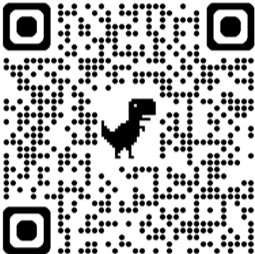Traumatic Brain Injury (TBI)
Part of Brain Game project
Create multiple-choice games on Wisc-Online and play them on our Chakalaka mobile app!
But that's not all! Explore educational games created by others. Simply search by category or enter agame code number and dive into a world of learning and fun.
Download the Chakalaka mobile app here:

Topics of this game:
- Protect brain along w/skull; 3 layers of non-nervous tissue (dura mater, arachnoid mater, pia mater)
- Keeps the brain moist, lubricates the brain and protects the brain from changes in pressure.
- A moving object strikes another object (head)(slower or stationary)
- An object increases its rate of speed; The head is propelled by some external force
- An object decreases its speed; The head is forced to an abrupt stop
- Brain is initially at rest; force from outside; Brain is impacted by the moving skull and propelled forward; There is tissue compression + stretching
- The head is moving at some velocity and suddenly stops; the brain, due to inertia, keeps moving; it then strikes the now stationary skull
- Initial impact on brain; blow to brain; initial point of impact; force from blow spreads thru the brain + causes it to strike skull on other side
- Brain is relatively fixed at the brain stem; Frontal and temporal lobes are particularly vulnerable
- Injuries result from significant pressure changes affecting air and fluid filled areas of the body
- Localized; Tends to result from penetrating injury
- Damage throughout the brain; Tends to result from acceleration/decel-eration injuries and pressure (blast) injuries
- Usually include a skull fracture; Meningeal layer is cut, exposing brain tissue; Opens the brain to more infection
- May or may not involve skull fracture; Meninges remain intact; Lessens the chance of infection; Does NOT lessen the severity of injury
- Occur at the time of the impact; Lacerations, contusions, fractures, DAI
- Occur after the initial impact, as the body responds to it. Complications from it; Overlap between what is considered primary and secondary
- Cut in the scalp, meninges, brain, vascular structures. Can be caused by bone or by force itself (hematoma/hemorrhage)
- Bruises; Edema, hemorrhage, necrosis, infarction; Frontal/temporal lobes due to the bones of the cranium
- Brain shearing / tearing and/or axon damage; Rotational forces, Chemical changes in axons, Forces between brain and cranium can “tear” brain tissue
- Collection of blood; Space occupying lesion; Described by its location: extradural/epidural, subdural, subarachnoid, intracerebral
- Swelling; Focal or diffuse; increases intracranial pressure; ass effect, midline shift, herniation
- Lack of arousal/response; Results from damage to reticular formation (nuclei in brain stem) or lack of comm. of info from brain stem to cortex
- Abnormal electrical discharge of cortical neurons
- A= airway, B= breathing, C= circulation, D= disablity, E= exposure
- Involves shaving the portion of the head, exposing the dura, removal of the clot, repairing the artery, irrigation
- Buildup of pressure inside the skull; edema, blood; decreases blood flow
- Like a craniotomy, but the skull piece is left off and stored; Permits the brain to swell without impingement
- Inability to maintain a coherent stream of thought; A disturbance of awareness with heightened distractibility
- Inability to carry out a sequence of goal-directed movements; May not be noted until the individual is challenged in some way
User comments are currently unavailable. We apologize for the inconvenience and are working to restore this feature as soon as possible.

